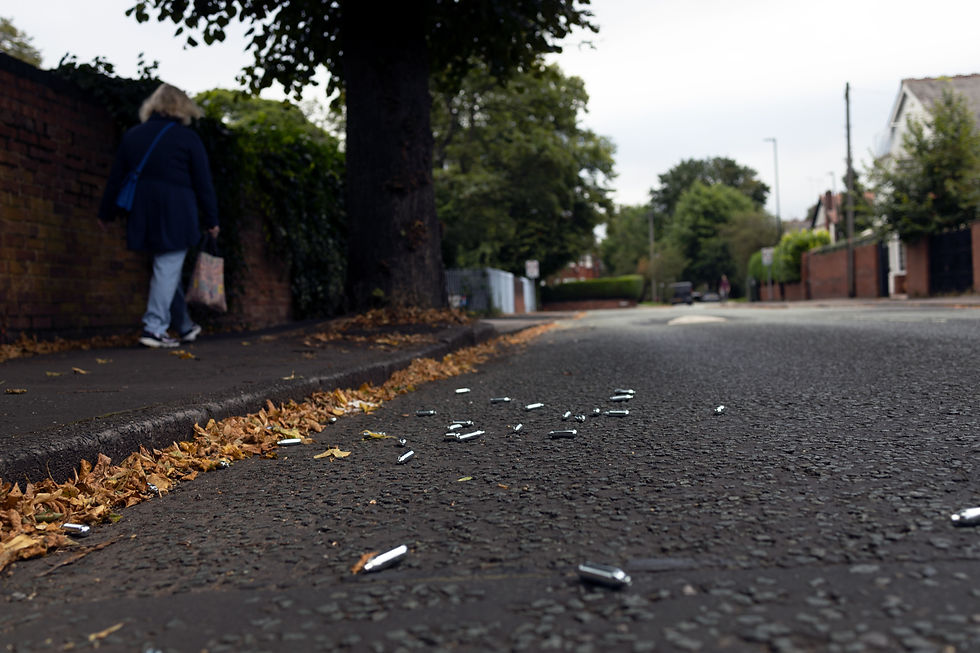Understanding what is driving serious violence: drugs
- Crest Advisory
- Feb 26, 2020
- 3 min read
Updated: Apr 29
Insights Report
Authors: Harvey Redgrave, Chief Executive | Callyane Desroches, Head of Policy and Strategy | Sophie du Mont
Supporting report author: Gavin Hales, Senior Associate Fellow, The Police Foundation
Wednesday 26 February 2020

REPORT (PDF): What is driving serious violence: drugs
England and Wales is currently experiencing a rise in recorded violence. While some of that increase is thought to be due to changes in police recording practices, a subset of (high-harm) offences, such as homicide, robbery and knife crime, show real and substantial rises.
This is the second in a series of reports investigating the drivers of serious violence in England and Wales in recent years. Building on the first publication, this report seeks to examine the role of drug markets as a driver of serious violence.
We explore how the structures of the drug market have changed, how they are linked to violence and whether public service response to the drugs market have been effective. We have drawn on a range of existing (largely published) data and carried out new primary research, including a ‘deep dive’ in an inner London borough and semi-structured interviews with law enforcement and policing experts across the country.
Findings
The supply of Class A drugs has increased: the wholesale and retail purity of powder cocaine, crack and heroin has increased in recent years to historically high levels, at the same time as prices have fallen. This forms part of an international trend, which includes the growth in cocaine production in South America.
This appears to have impacted demand for drugs in the UK: there is evidence that powder and crack cocaine use – the latter primarily in combination with heroin – have increased in recent years, as has the use of other drugs such as ecstasy and ketamine.
Drug market dynamics have changed: increased cocaine supply seems to have driven retail market expansion, notably (but not exclusively) in the form of ‘county lines’, controlled out of metropolitan hubs, dealing crack and heroin in provincial towns. A small, but increasing part of the market, is conducted online or through the dark web, which may be squeezing the profits of street-based gangs.
There is evidence that these dynamics are impacting the nature of crime within the UK: the data shows a correlation between the growing availability of harmful drugs and the rise in serious violence, including a notable increase in the number of drug-related homicides. At the same time, the profile of those involved has changed: those convicted of class A drugs supply are getting younger.
Public services - both policing and health - have struggled to respond to these trends: the UK is seizing less Class A drugs than its neighbours and prosecuting fewer drug dealers. At the same time, a growing number of problematic drug users are not in any treatment.
There remain wide gaps in knowledge: significant gaps exist in the intelligence picture, most notably at middle market level and where drug markets cross police and law enforcement boundaries or remits. Partly this is a function of police cuts (fewer police analysts), but also relates to a failure across government to get to grips with changes in drug markets.
Conclusion
Our report has identified three significant gaps in the way that public services respond to drug markets as a driver of serious violence:
Intelligence: too little is known about the nature and scope of those markets. The Home Office should work collaboratively with universities and civil society to explore the nature of drug markets and the relationship to violence. It should also ensure that a proportion of the 20k uplift in officers is kept for hiring police analysts, many of whom were lost in the first wave of police cuts post-2010.
Prevention: in order to reduce the ‘demand’ for drugs, early intervention is key, but has not been prioritised. Home Office and Department of Health should commit to increasing the proportion of problematic users (primarily crack and heroin) receiving drug treatment. It should also pilot a new and expanded Drug Intervention Programme to address the underlying causes of those whose criminality is driven by drug misuse.
Enforcement: the Home Office (and PCCs) should support the police to reprioritise enforcement activity around the goal of disrupting the supply of harmful drugs into the UK, for example through re-focusing the Strategic Priorities of the National Crime Agency. It should also ensure that there is a targeted drugs unit within every force in England and Wales to strengthen local response.



